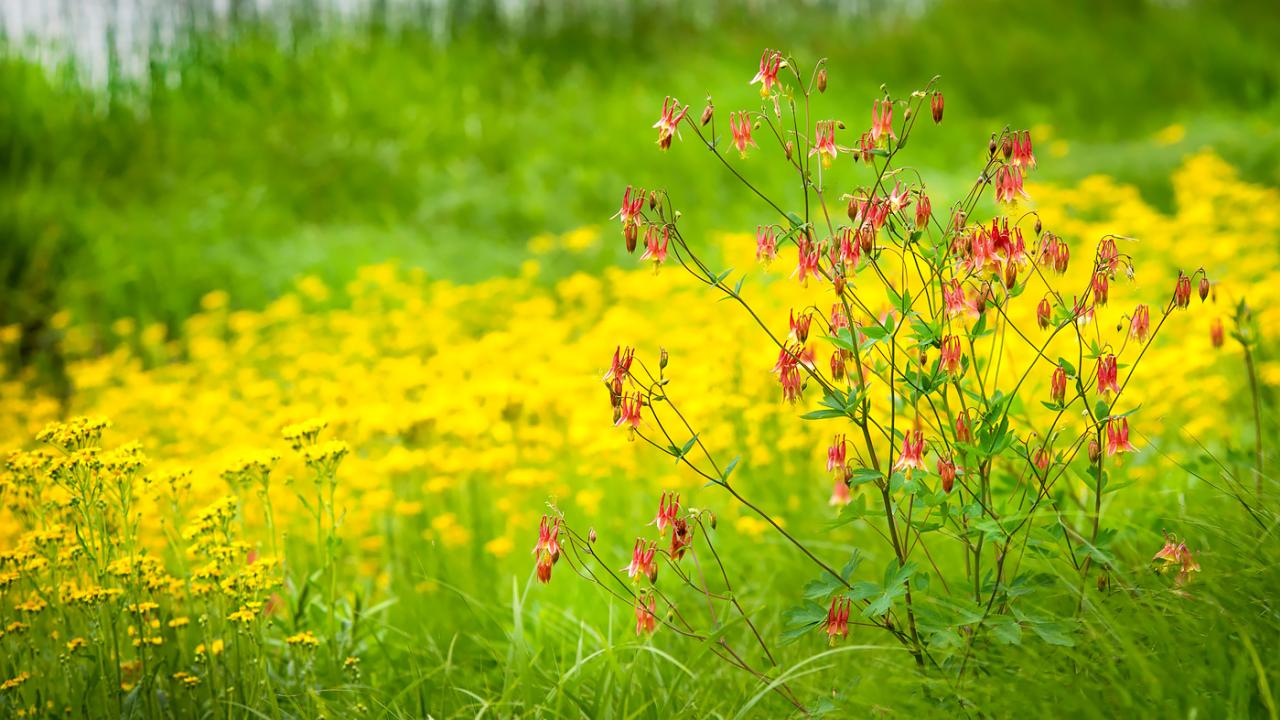

Plant Science & Conservation
Garden Stories
Summer Bloom Highlight: The Prairie Rose
Pondering the Prairie Series
Rosa setigera, or Illinois rose, grows in moist prairies and thickets, and is a typical wild rose in many ways: five pink petals, with lots of yellow stamens in the center supported by prickly stems. There are distinct differences, however. Illinois rose is larger than most wild roses of the prairies—often growing up to 8 feet tall, while others rarely grow more than 4 feet tall and usually less.
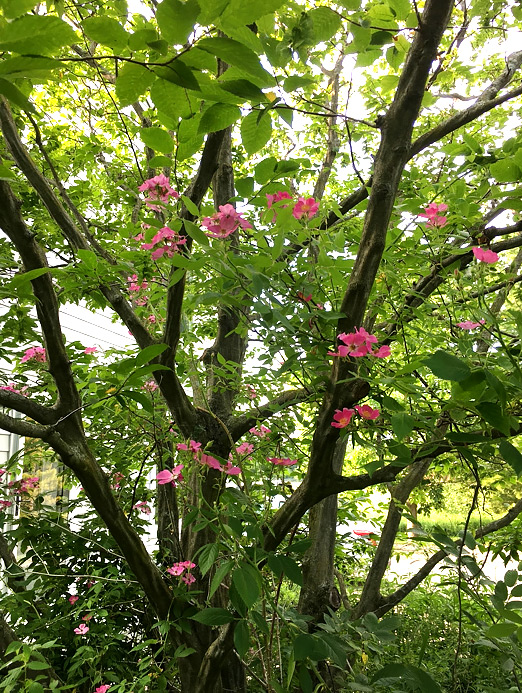
When growing in the support of tree branches, this sprawling rose can reach 8 feet high or more.
Illinois rose has long arching stems that will root at the tips if they touch the ground. It usually has three leaflets per leaf—especially near the flowers—and sometimes five leaflets.
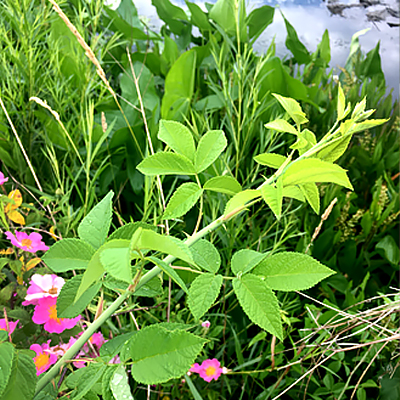
Although there are usually three leaflets per leaf, sometimes there can be five leaflets.
Its multiple styles (female flower parts that support the stigma, where pollen is delivered from insect pollinators) are united instead of separated in most wild roses. There is another rose (Rosa multiflora, multiflora rose) that has large, arching canes and united styles, but it has numerous small, white flowers, vicious thorns, and leaflets greater than five per leaf. Multiflora rose is also a noxious, invasive weed that was introduced in this country to serve as a living fence in pastures. Livestock found it just as miserable to get tangled up in its thorns, as do humans, and were content to stay within its boundaries. Also, the Illinois rose has delightful flowers that emerge a deep pink and lighten to white as they mature, giving the effect of a multi-pink colored rose.
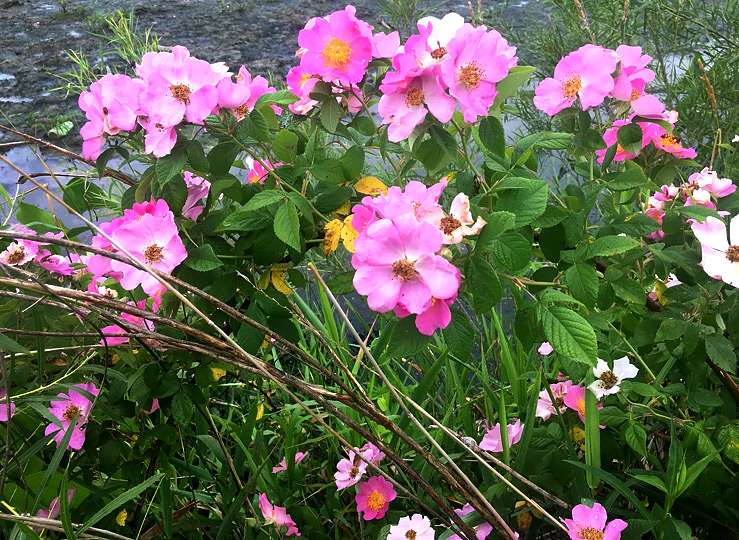
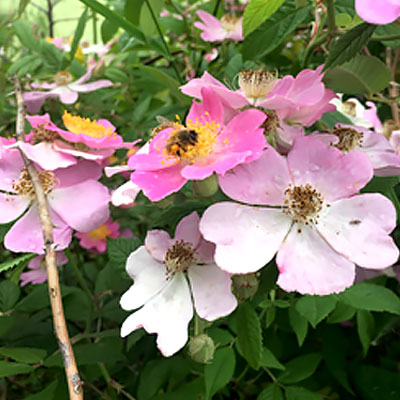
Flowers emerge a deep pink and lighten to white as they mature, giving the effect of a multi-pink colored rose.
These are interesting differences that separate this rose from other wild roses, but the biggest difference that separates this rose from all other roses cannot be seen, at least when in flower. Illinois rose is the only rose that is dioecious. Dioecism is when plants have male and female flowers on separate plants. The word dioecious means “two houses.”
Examples you might know are ginkgo trees and hollies. Ginkgoes planted in the landscape are almost always male because females have fruits with a terrible odor. In order to get holly berries on your holly shrubs, you need to plant a few male shrubs to ensure the female shrubs produce the festive berries. In both ginkgoes and hollies, the male and female flowers, although small, look different.
For Illinois rose, the male and female flowers look alike. It is very difficult to know if you are looking at a female flower or a male flower. This is call cryptic dioecism. Very few plants have it, and Rosa setigera is the only rose that has it. An Illinois rose plant sporting female flowers looks just like a plant sporting male flowers. The difference is in the pollen grains.

Female plants produce rose hip fruits.
The numerous stamens on both male and female flowers produce pollen but the pollen grains on female flowers are sterile. Upon landing on a receptive stigma, they will not germinate and fertilize the flower. The best way to tell female plants from male plants is in the fall when the female plants produce the typical red rose hip fruits. Male plants will not have any rose hips.
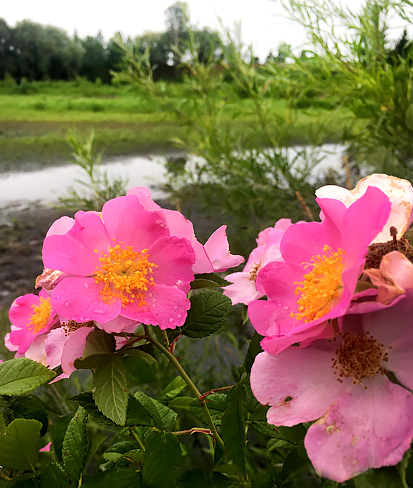
Interestingly, the bees that pollinate Illinois roses visit the stamens of both female and male flowers to collect pollen but linger longer on male flowers with viable pollen and visit female flowers briefly—just enough time to brush pollen against the flower’s stigma to successfully pollinate the plant.
So when you see your next Illinois rose, you will know this plant is unique among roses. If you can distinguish its male flowers from female flowers, you will be unique among humans.

